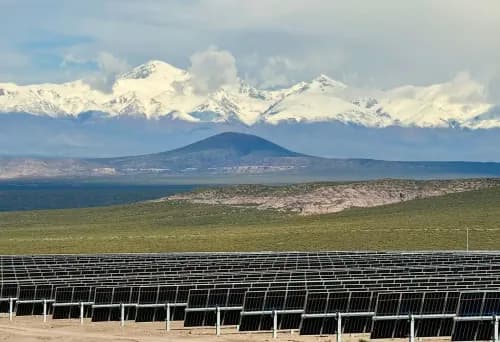An exclusive analysis by Inés and Carlos Saravia Frías on the major opportunities for the mining industry arising from the RIGI and the removal of export duties.
By Panorama Minero
The history of a country is shaped by milestones—decisive moments that chart new paths and define its future. Argentina, throughout its development, has experienced key turning points, shifts that transformed its productive structure and projected it onto the global stage. Each of these moments marked the beginning of a new chapter of economic development, driven by a strategic vision to seize global opportunities.
Today, the global energy crossroads places us before an opportunity that could once again reshape the productive destiny of our country. In this new international context, history, as Magister vitae, calls us to reflect on the events that served as turning points, so that we can envision a more promising future.
The first major shift took place in the late 19th century. The Conquest of the Desert, led by General Julio Argentino Roca, expanded the country's productive frontiers and consolidated the geographical boundaries of the Nation. This process was encompased by the introduction and use of wire fencing—an innovation that completely transformed land use. This simple yet revolutionary advancement enabled the subdivision of the vast plains of the Pampas, making large-scale agriculture possible. The delimitation of farmland, combined with the fertility of the Pampas, allowed for intensive wheat cultivation, triggering a productive boom that turned Argentina into the 'breadbasket of the world' and a key player in the international food trade.
The second milestone was the introduction of high-quality British cattle breeds, which significantly improved the quality and yield of livestock production. This transformation, together with the emergence of the refrigerated meat technology, enabled our country not only to produce top-quality beef but also to export it in large volumes to European markets. Argentina ceased to be merely a producer of wool and hides and became a solid producer and exporter of high-quality meat, consolidating its position and building a brand that still retains its prestige worldwide.
Today, we have the opportunity to generate a third milestone. Argentina, thanks to its geological wealth, has the potential to become a key player in this new productive era. The global energy transition is driving a growing demand for strategic minerals such as copper, lithium, and uranium—essential for renewable energy, electric vehicles, and cutting-edge technology.
Long before the arrival of the Spanish, the Incas had structured their empire around mineral production. The famous "Inca Road," which crosses much of the southern part of our continent, is essentially a map of the mineral deposits that were already being exploited at the time. The Spanish, with their intelligence and vision of conquest, knew how to take advantage of this knowledge. The case of the Cerro Rico in Potosí is the most eloquent example. The enormous silver production from Potosí not only supplied Europe with cutlery, candelabras, and all kinds of luxurious items, but also had a global impact. The massive injection of silver into the market through the 'doubloons' of the time not only financed European wars, but also triggered the first recorded instance of global inflation. This stands as proof that the power of mining as a generator of wealth can indeed change the course of history.
In honor of the name Argentum, it is time for the Andean provinces to stop being mere spectators and become protagonists. After decades of being left behind, they now have the opportunity to contribute to the country’s growth and rise as pillars of a new cycle of national expansion.
Two recent government decisions help create favorable conditions to develop and harness the vast mining potential of our country.
The first is the implementation of the RIGI (Regime for the Promotion of Large Investments), an attractive tool for the development of mining projects. Through tax and foreign exchange incentives, it enables the viability, expansion, and competitiveness of large-scale mining ventures.
The second is the elimination of export duties for certain strategic minerals such as copper and gold (although there is still progress to be made regarding silver and lithium).
Both decisions represent a strong start and a historic opportunity to set our country on a path of sustained growth, based on the responsible use of its resources.
Hopefully, mining—that Sleeping Beauty, which like in the Brothers Grimm tale—will awaken from its slumber and become the driving force that propels Argentina toward a prosperous future.


























